13. Agra - Kacchpura Village
Kacchpura village
Kachhpura provides an insight into the local culture and rural life of the region. It gives a good idea of the traditional lifestyle of the villagers and our guide was from the village with a passion for change - a lot of which he has already brought about. It is always difficult to get the balance between showing a working village to tourists, raising much needed revenue, without those living there feeling like curiosities in a zoo/museum. I think that perhaps it only works because of the people involved in running it ... but it is so important to see the "real" India as well as the Taj and on a flying visit I think this is perhaps the only way of doing so.
This is a Community Development work - a centre for Urban and Regional Excellence (CURE) - an NGO has built sustainable livelihoods for youth and women from low income settlements and improved their living environments through providing infrastructure services and integration within the city. Their main focus has been twofold:
Improving Sanitation: CURE has mobilized the community and supported in the construction of Household toilets, laying of roads and drains and construction of Decentralized Waste Water Treatment system (DEWAT) which has significantly improve the living environment of the people. The local inhabitants now work hard to keep their village swept and clean - unfortunately they are frustrated by the fact that the municipality does not remove this rubbish which collects on the bridge awaiting collection.
Livelihood opportunities: Women groups have been trained in making products/souvenirs which can be supplied to the tourism industry and sold in the local market. Two self help groups have been formed. Community youth has been trained as tour animators and Mughal Heritage Walk started in the village to provide livelihood opportunities to the youth.
This is a Community Development work - a centre for Urban and Regional Excellence (CURE) - an NGO has built sustainable livelihoods for youth and women from low income settlements and improved their living environments through providing infrastructure services and integration within the city. Their main focus has been twofold:
Improving Sanitation: CURE has mobilized the community and supported in the construction of Household toilets, laying of roads and drains and construction of Decentralized Waste Water Treatment system (DEWAT) which has significantly improve the living environment of the people. The local inhabitants now work hard to keep their village swept and clean - unfortunately they are frustrated by the fact that the municipality does not remove this rubbish which collects on the bridge awaiting collection.
Livelihood opportunities: Women groups have been trained in making products/souvenirs which can be supplied to the tourism industry and sold in the local market. Two self help groups have been formed. Community youth has been trained as tour animators and Mughal Heritage Walk started in the village to provide livelihood opportunities to the youth.





These "patties" are formed by mixing cow dung and mud and straw and are used to burn slowly on the fires. Each bears the handmark of the maker and are stacked to dry thoroughly.


The school - now attended by boys and girls - previously the girls stayed at home and helped make the shoes but now have the potential of a better future.
Shoe making is the main income for the village but each pair is sold to the factory to finish for pence.
The top part of the shoe is made, glued and left in the sun to dry.




Our guide explained how the fires and day beds would be made and used, and an idea of a usual day in the life of someone living in the village.
The Elephant quarters have been converted into a Mosque that is kept scrupulously clean.

Village daily life






Bangels and Groceries delivered to your door!



Always be prepared for the unexpected!


Beautiful colourful people.





Stopping for a cup of tea we admired the most amazing view from the roof top.

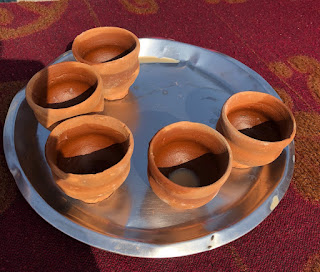

Cleaning up the city


The uncollected rubbish.






From Agra we returned to Delhi for our final night and dinner all together and then our flight back to the UK.
Conclusion
I was not at all sure about going on my own with a group trip like this when I booked it. Perhaps we were very lucky with the group of people who decided to come but it was a great holiday and I met lovely people many of whom I have stayed in contact with. So if you are reading this and tempted - go for it and make some really special memories of your own!!


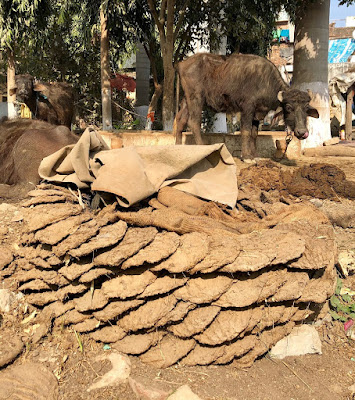





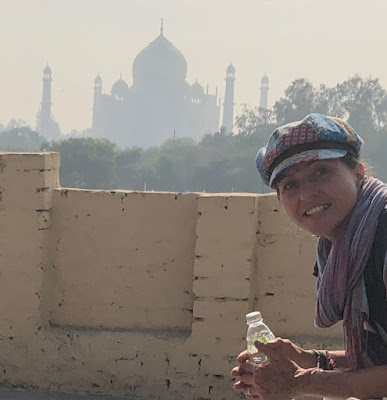
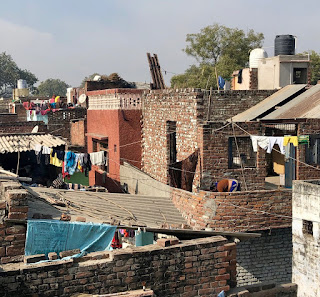

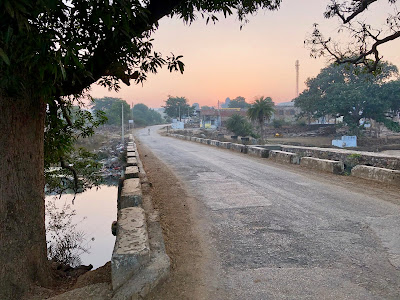


Comments
Post a Comment